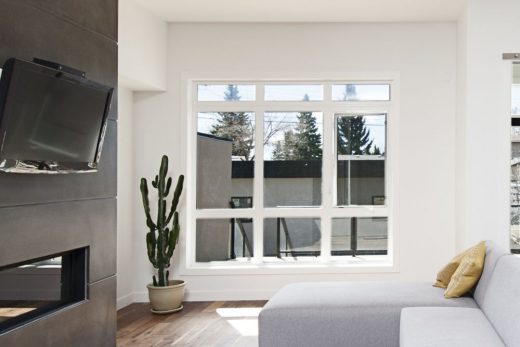ORGANIZE, ORGANIZE, ORGANIZE
After the clutter has been cleaned out, it’s time to organize. When everything has a place, we have fewer things to worry about. “When clutter is tempered, styled, organized, or decorated there becomes a flow,” sa professional organizing company, explaining how we can allow our energy to flow naturally in a space. No matter the daily routine of the client, interior designers can devise a plan that makes it easy to stay organized.
ENGAGE THE SENSES
Smell, touch, sound: all of these elements can promote calm, and are just as important as the visual design of a room. “I would argue that texture always helps to create a richer experience of a space–and I think it particularly helps create a relaxing space because it engages our sense of touch and requires our brains to slow down and engage at the scale of the fingertip,”
“The more you can engage the senses, the more you will impact mood.”
CREATE UNIQUE, DESIGNATED SPACES
Mixed-use spaces are important, and hard to escape; however, designated spaces also make a design relaxing, whether the client requires a home office, craft space, or meditation zone. “We often talk about a work/life balance in the emotional/mental sense, but that applies to physical spaces as well,” “It’s much easier to put the stress and commitments of the work day on hold if you can close the door to your home office and join the family in the kitchen.”
AVOID SEEKING PERFECTION
When a space feels too designed, it isn’t homey; at the same time, a “homey” space can also signify homely, or not beautiful. To find the balance between overdone and underdone, Carlson subscribes to the Japanese philosophy of wabi-sabi, meaning “perfect imperfection.” For the kitchen pictured above, Carlson used Himalayan water backpacks as pendant lights. “The organic, imperfect finish adds a nice history, but also a visual ease that we juxtaposed against a clean white modern countertop,
Opposing strategies are balanced for just the right harmony and depth.”
EMPHASIZE SPACIOUSNESS
It’s hard to read a cramped space as calming. Bounded spaces can create claustrophobia, while wide windows, an open-concept layout, and generous square footage seem to offer possibilities. Mann refers to this feeling of openness as a “sense of spaciousness”—each area flows into the next without inhibitions, and with common elements that tie the various rooms and areas together.
DESIGN LIKE A FILM DIRECTOR
With many designers and design lovers relying on Instagram for inspiration, it’s easy to imagine design as a single, framed image, frozen in time and space. However, if we think of design as more of an immersive film rather than a square still life passing through our feed, it’s easier to understand how various elements inspire different emotions, like peacefulness. Films are designed to inspire emotion. The color, sound, and frame associated with each image sparks a particular emotion, driving the viewer deeper into the feeling of the story the film is trying to tell.





